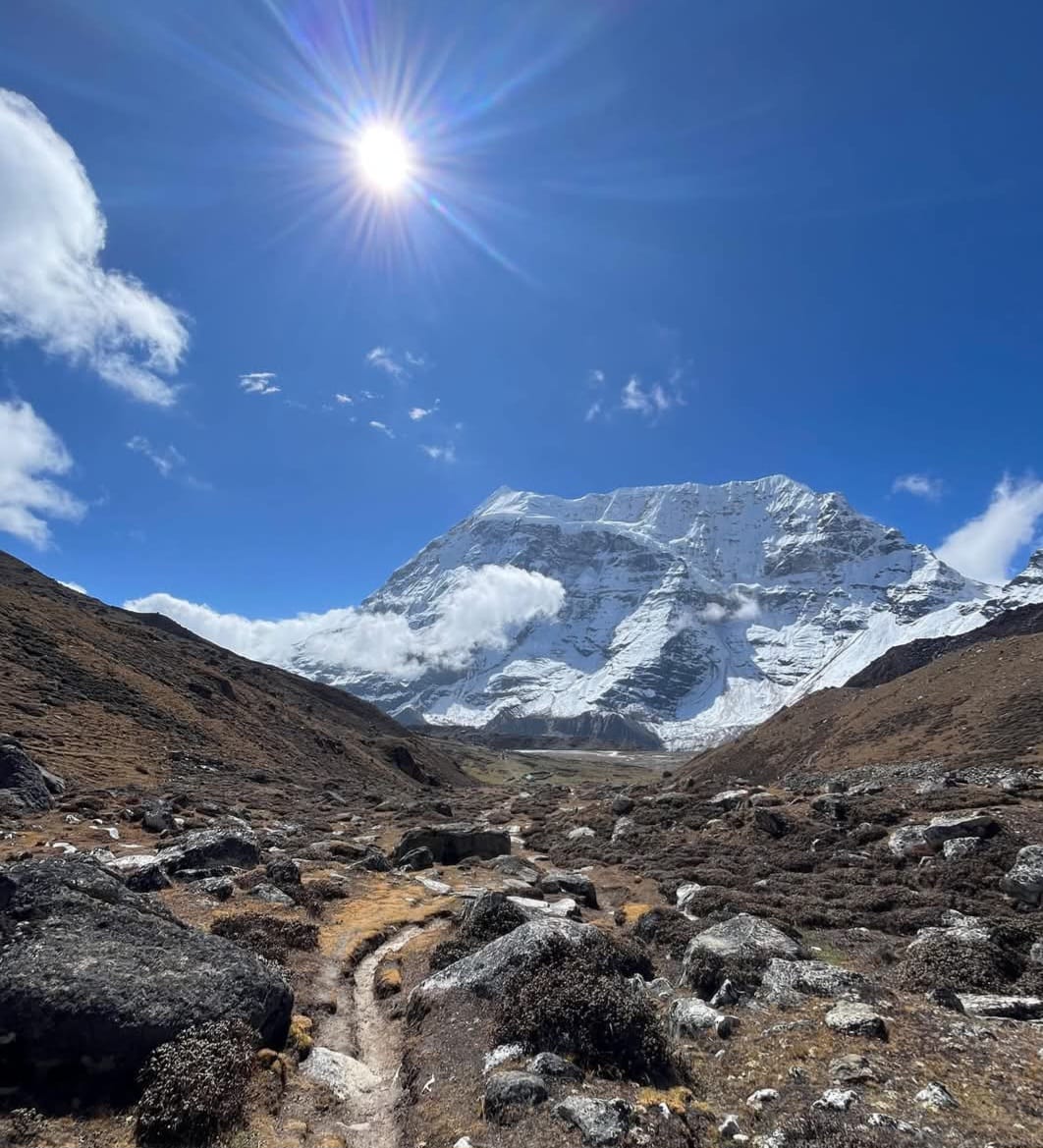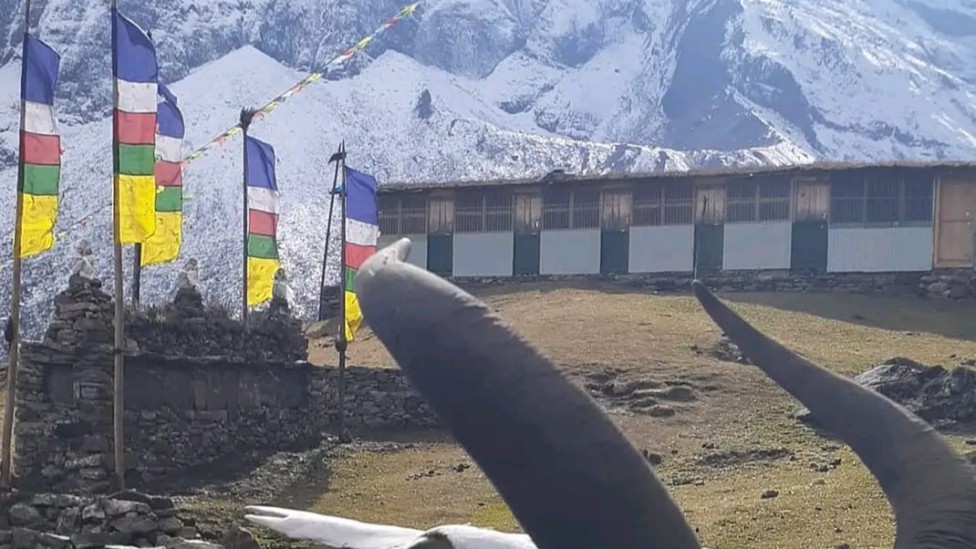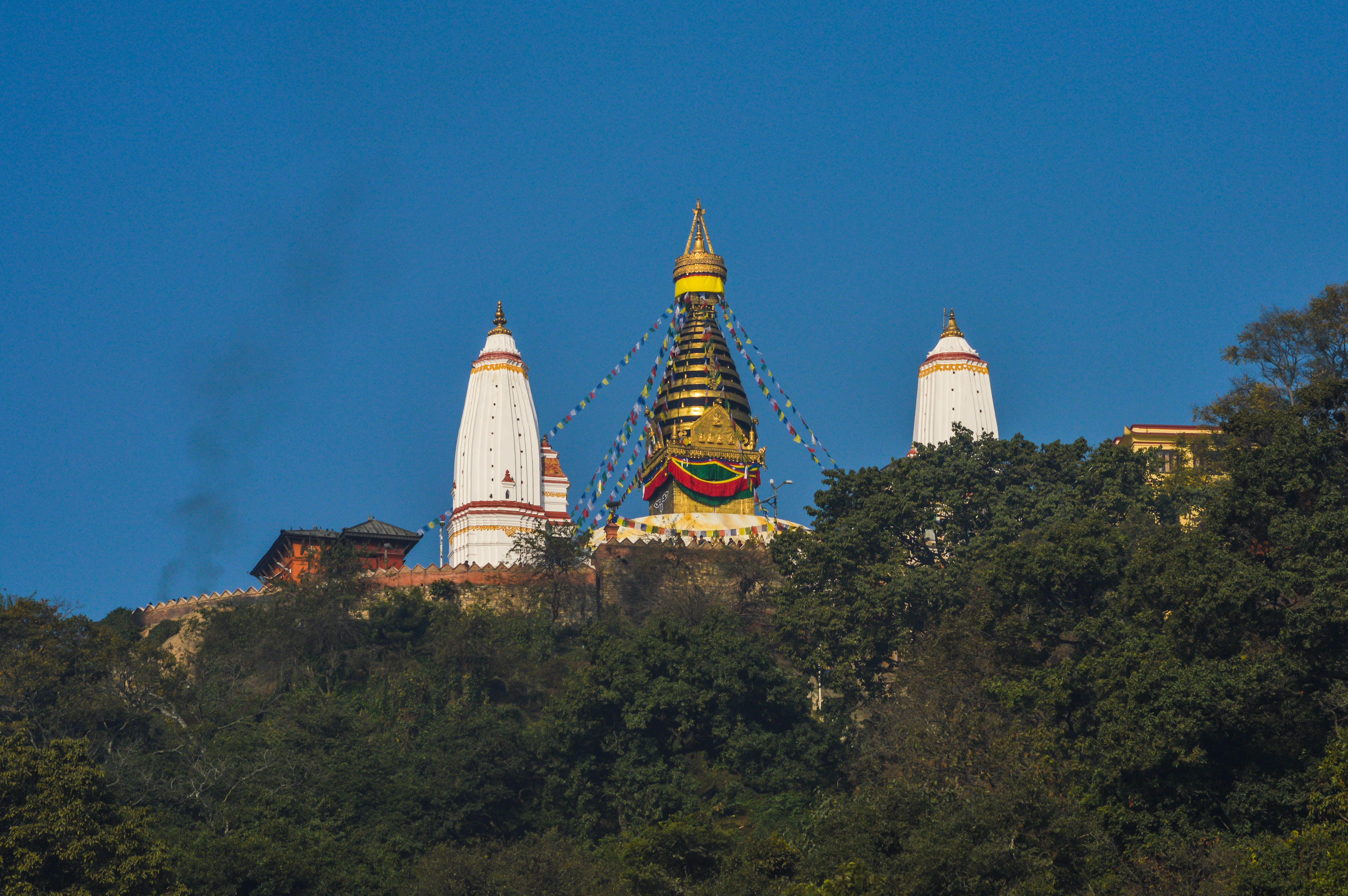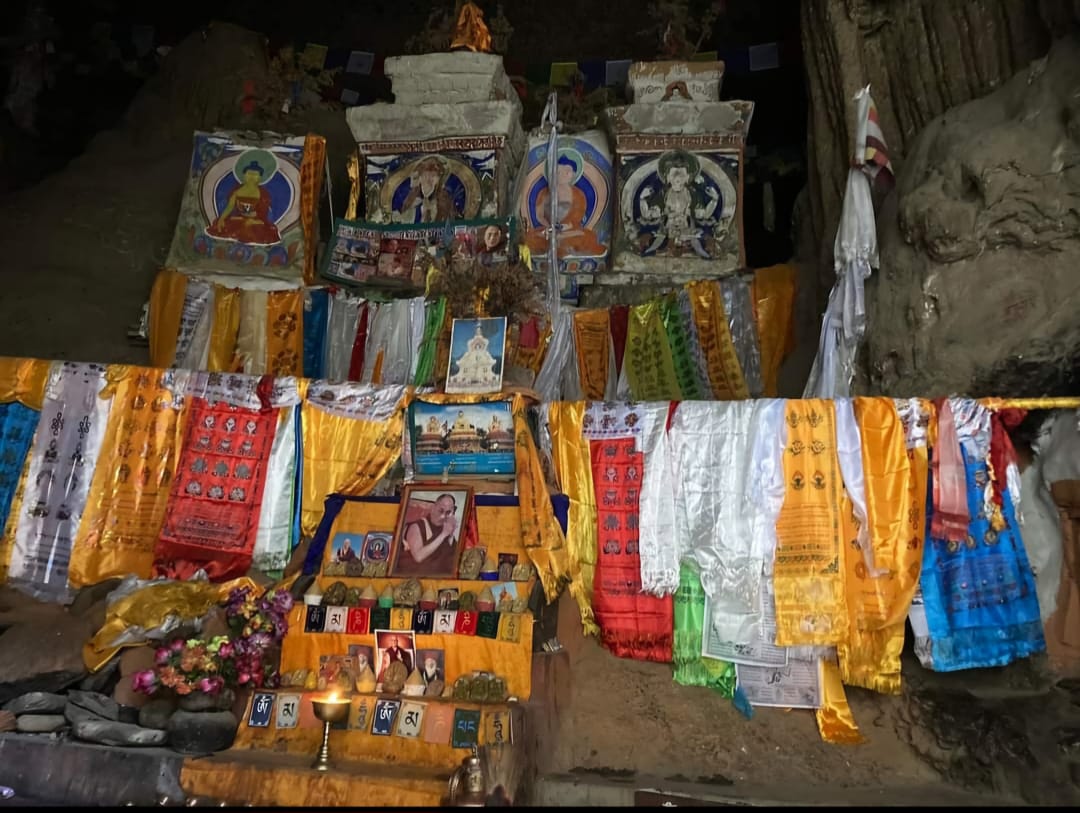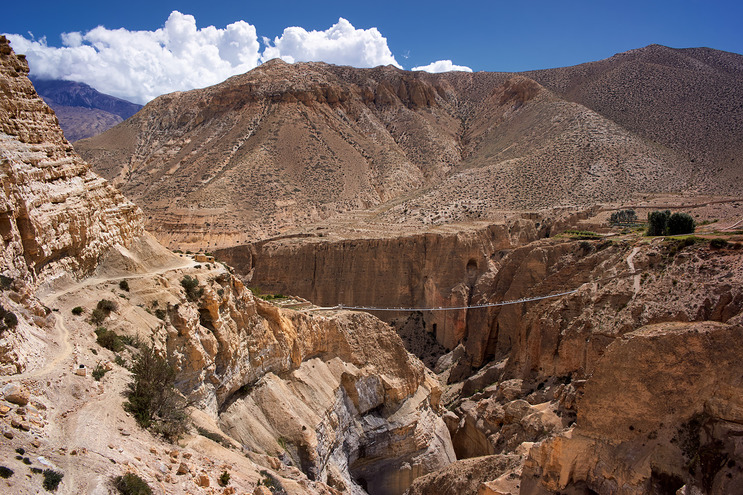The Makalu Base Camp Trek is one of Nepal’s most remote and pristine trekking adventures, ideal for experienced trekkers looking to explore untouched wilderness, high alpine scenery, and authentic local culture. Centered around the world’s fifth highest mountain, Mt. Makalu (8,485 meters), this trek offers a unique journey through the Makalu-Barun National Park—a region celebrated for its biodiversity and dramatic landscapes. Unlike the more commercialized Everest or Annapurna regions, the Makalu Base Camp Trek provides solitude, serenity, and a deep connection with nature.
Location and Accessibility of Makalu Base Camp Trek
The Makalu Base Camp Trek is situated in the eastern region of Nepal, within Makalu-Barun National Park, which spans parts of Sankhuwasabha and Solukhumbu districts. The trek leads adventurers to the base of Mt. Makalu (8,485 meters), the fifth-highest mountain in the world, located about 22 kilometers southeast of Mt. Everest. The park itself is part of the greater Sagarmatha (Everest) ecosystem, bordered by the Arun River in the west and the Barun Glacier in the north.
Accessibility to go Makalu Base Camp
Reaching the trailhead for the Makalu Base Camp Trek involves multiple stages, and the remote location adds to the adventure and challenge:
1. Flight from Kathmandu to Tumlingtar
The most common way to start the journey is by taking a domestic flight from Kathmandu to Tumlingtar, a small town at an altitude of about 460 meters. The flight takes around 45 to 50 minutes and offers views of eastern Nepal's hilly landscape and distant Himalayan peaks.
Airlines: Yeti Airlines, Tara Air, and Summit Air occasionally operate flights to Tumlingtar, depending on the season and weather.
Tip: Flights can be delayed or canceled due to weather, especially during the monsoon or winter, so it’s wise to keep a buffer day in your itinerary.
2. Drive from Tumlingtar to Chichila or Num
From Tumlingtar, trekkers typically drive by jeep or local bus to either Chichila or Num, the latter being the preferred starting point for many trekkers. This leg of the journey takes about 4 to 6 hours depending on road conditions, which can be rough and affected by rain.
- Chichila (1,900 meters): A scenic Gurung village that serves as a peaceful place to start the trek.
- Num (1,560 meters): A more common trailhead with basic lodges and a bustling local market atmosphere.
Alternate Route (Longer, Less Common) for Makalu Base Camp
For trekkers with more time and a desire for a more gradual ascent and cultural immersion, an alternate approach is trekking from Hille or Khandbari. This longer version of the trek passes through the Arun Valley, a beautiful and less-touristy area, before joining the main trail at Num or Seduwa. This option adds several days but offers unique opportunities to interact with local communities.
Regional Overview
The Makalu region lies in a transition zone between Nepal’s mid-hills and the high Himalayas. As you travel toward Makalu Base Camp, the trail climbs from warm, subtropical valleys to frigid, glacial landscapes. This variation in altitude also means vastly different trail conditions, ranging from forested paths and rice terraces in the lower sections to rocky trails and snow-covered passes at higher elevations.
Permits and Regulations for Makalu Base Camp Trek
Since the Makalu Base Camp Trek enters a protected area, several permits are required:
- Makalu-Barun National Park Entry Permit – Approx. NPR 3,000 (for foreigners)
- TIMS Card (Trekkers' Information Management System) – Required if not traveling with a registered trekking agency.
These permits can be arranged in Kathmandu or through trekking agencies. As Makalu is not in a restricted zone, a special restricted area permit is not needed, unlike regions such as Upper Mustang or Manaslu.
Limited Infrastructure:
Due to the area’s remoteness and low tourist traffic, the Makalu region has limited infrastructure. Roads are rough, transport options are fewer, and there are fewer teahouses and lodges compared to regions like Annapurna or Everest. This adds to the logistical challenge but also preserves the area's untouched charm. Because of this, many trekkers either go with organized trekking groups or hire local guides and porters to manage supplies and navigation.
Reaching Makalu Base Camp is more demanding than popular treks, but this difficulty is part of its appeal. The multi-stage journey—from a flight to Tumlingtar, a rough drive to Num, and then a remote mountain trail—ensures that only the most committed adventurers reach its stunning high-altitude landscapes. Its isolation rewards trekkers with pristine nature, solitude, and a truly wild Himalayan experience.
Makalu Base Camp Trek Difficulties and Duration
The Makalu Base Camp Trek is one of the most challenging and remote treks in Nepal, offering a raw and unfiltered Himalayan experience. Its duration and difficulty are influenced by several factors, including the remoteness of the region, elevation gain, trail conditions, and limited infrastructure. This trek is best suited for seasoned trekkers with a good level of fitness and prior high-altitude experience.
Trek Duration of Makalu Base Camp
The standard Makalu Base Camp Trek typically takes 18 to 22 days, depending on the specific route, acclimatization schedule, and weather conditions. Here is a general breakdown:
Typical Itinerary Outline:
- Day 1–2: Flight from Kathmandu to Tumlingtar; drive to Num.
- Day 3–6: Trek from Num through Seduwa, Tashigaon, and Khongma Danda.
- Day 7–10: Cross the Shipton La Pass and descend to the Barun Valley.
- Day 11–13: Reach Makalu Base Camp (4,870m), rest and explore.
- Day 14–20: Return by the same route or an alternate descent path.
- Day 21–22: Drive back to Tumlingtar and fly to Kathmandu.
A few additional days may be required for:
- Acclimatization at higher altitudes.
- Weather delays, especially with flights to and from Tumlingtar.
- Side trips or exploration days at the base camp or along the Barun Valley.
Those seeking a longer and more culturally immersive experience may start the trek earlier from Khandbari or Hille, which adds about 3–5 days but passes through rich Rai and Limbu villages in the Arun Valley.
Difficulty Level: Strenuous
The Makalu Base Camp Trek is rated as “strenuous” or “difficult” due to several contributing factors:
1. High Altitude
- The trek reaches up to 4,870 meters (15,978 ft) at Makalu Base Camp.
- While this is slightly lower than Everest Base Camp, the long, steady climb and limited acclimatization points make it a demanding journey.
- Altitude-related illnesses such as Acute Mountain Sickness (AMS) are a serious risk, especially beyond 3,500 meters. Adequate acclimatization is crucial.
2. Steep and Repetitive Ascents and Descents
- The trail features long climbs and descents almost every day, especially in the first half (Num to Khongma Danda).
- The ascent from Tashigaon to Shipton La Pass (over 4,200 meters) is one of the toughest segments, involving a steep climb through forested and rocky terrain.
3. Remote Terrain
- The trek traverses one of the most isolated regions of Nepal. There are long stretches without villages or teahouses, particularly between Khongma and Yangle Kharka.
- Self-sufficiency or full logistical support (guide, porters, and sometimes camping gear) is often necessary.
4. Trail Conditions
- Trails can be rough, narrow, slippery, and muddy—especially after rains or snowfall.
- There are no paved paths or suspension bridges like in Everest or Annapurna regions. River crossings and landslide-prone zones are common.
- Snow and ice are likely at higher elevations in early spring or late autumn.
Required Fitness and Preparation
This trek demands a high level of physical fitness and endurance. Trekkers should be prepared for:
- 6 to 8 hours of trekking daily over uneven, rugged terrain.
- Carrying a backpack (if unsupported) with layers, snacks, and water.
- Cold weather and thin air at high altitude, especially at night.
Training Tips:
Build cardiovascular endurance through running, hiking, or cycling.
Strengthen leg muscles with squats, lunges, and stair climbing.
Include multi-day hikes or treks in your training to simulate real conditions.
| Aspect | Details |
|---|---|
| Total Duration | 18–22 days (including flights and acclimatization) |
| Maximum Altitude | 4,870 m (Makalu Base Camp) |
| Difficulty | Strenuous – for experienced trekkers |
| Daily Trekking | 6–8 hours per day |
| Risks | Altitude sickness, fatigue, weather-related delays |
| Trail Type | Remote, steep, and rugged with minimal infrastructure |
The Makalu Base Camp Trek is not for the casual hiker. It challenges trekkers with its remoteness, elevation, and physical demands—but those who complete it are rewarded with extraordinary views, solitude, and a deep sense of achievement. Proper planning, physical preparation, and mental resilience are key to a successful and safe journey.
Major Highlights of the Makalu Base Camp Trek
The Makalu Base Camp Trek is a hidden gem in Nepal's eastern Himalayas, offering an incredible mix of natural beauty, cultural richness, and high-altitude adventure. Though less frequented than routes like Everest or Annapurna, it is packed with memorable highlights that make it one of the most rewarding treks for serious hikers. Here are the major highlights in detail:
1. Makalu Base Camp (4,870 meters)
The ultimate destination of the trek, Makalu Base Camp sits in a remote alpine setting beneath the towering south face of Mt. Makalu (8,485 m)—the world’s fifth-highest peak. The base camp offers jaw-dropping views of Makalu, especially during sunrise and sunset when the light catches the glacier and ice wall. From here, trekkers also enjoy sweeping views of Everest, Lhotse, Chamlang, and Baruntse, making it one of the most scenic high camps in Nepal.
The glacial landscapes around base camp are stark, beautiful, and feel otherworldly.
A side hike towards the Barun Glacier provides closer views of icefalls and crevasses.
2. Barun Valley – A Hidden Himalayan Sanctuary
The Barun Valley is one of the last truly wild and undisturbed valleys in the Himalayas. Located inside the Makalu-Barun National Park, the valley is renowned for its breathtaking natural beauty and biodiversity. Towering cliffs rise above deep forests, and massive waterfalls plunge into lush greenery.
The valley transitions from dense forests at lower altitudes to alpine meadows and glacial terrain higher up.
It remains one of the few places on Earth where tropical forests meet snow-capped peaks within a short altitude range.
3. Crossing Shipton La Pass (4,216 meters)
One of the trek’s most demanding and exhilarating sections is the ascent to Shipton La Pass, named after the legendary mountaineer Eric Shipton. The trail to the pass includes steep climbs, stone staircases, and exposed ridges, but rewards trekkers with spectacular panoramic views.
From the pass, trekkers can see peaks like Makalu, Chamlang, and Peak 6 and 7.
The journey across the Keke La and Tutu La passes (nearby minor passes) adds to the high-altitude drama and challenge.
4. Makalu-Barun National Park and Conservation Area
- This protected area covers 2,330 square kilometers and features a rich array of flora and fauna due to its extreme altitudinal variation—from 400m to over 8,000m.
- Home to over 3,000 species of plants, 400 bird species, and 75 mammal species including the red panda, Himalayan black bear, snow leopard, and musk deer.
- Seasonal flowers such as rhododendrons, blue poppies, and primulas bloom in spring, painting the forests in vibrant colors.
5. Cultural Encounters in Rai and Sherpa Villages
The lower sections of the trek, especially in areas like Seduwa, Tashigaon, and Chichila, are inhabited by Rai, Sherpa, and Limbu communities. These villages offer an authentic glimpse into rural Himalayan life, untouched by mass tourism.
Trekkers can stay in local teahouses, taste traditional foods (like dhido, gundruk, and millet-based dishes), and observe religious practices at small monasteries and chortens.
The cultural richness here is less commercialized, giving you a more genuine and immersive experience.
6. Incredible Ecosystem and Vegetation Zones
The trail crosses through five different ecological zones:
- Subtropical forest (near Tumlingtar and Seduwa)
- Temperate broadleaf forest (Tashigaon to Khongma)
- Coniferous forest and Rhododendron zone (Khongma to Shipton La)
- Alpine meadow (Barun Valley)
- Glacial zone (Makalu Base Camp)
This rapid transition is a botanical and ecological marvel, allowing trekkers to experience a wide range of climates and ecosystems in a single journey.
7. Remote and Untouched Wilderness
Unlike Everest or Annapurna, the Makalu region sees very few trekkers. This isolation ensures:
Uncrowded trails
- A deeper connection to nature
- Minimal commercial development
- For adventurers seeking solitude, challenge, and raw natural beauty, this trek delivers an experience that feels more like an expedition than a tourist trek.
8. Panoramic Himalayan Views
Throughout the trek, you are treated to stunning vistas of:
- Mt. Makalu (8,485 m)
- Everest (8,848 m) – seen from certain ridgelines and high points
- Lhotse (8,516 m)
- Chamlang (7,319 m)
- Baruntse (7,129 m)
- Peak 6 and Peak 7 – sharp, icy pyramids rising dramatically above the valley
These views are best during autumn and spring, when the skies are clearest.
| Highlight | Description |
|---|---|
| Makalu Base Camp | Stunning high-altitude campsite with panoramic mountain views |
| Barun Valley | Remote, lush valley with waterfalls and rich biodiversity |
| Shipton La Pass | Challenging high pass with 360° Himalayan views |
| Makalu-Barun National Park | Diverse wildlife, pristine forests, and alpine ecosystems |
| Cultural Encounters | Authentic villages with Rai, Limbu, and Sherpa communities |
| Ecological Diversity | Trek passes through five distinct vegetation zones |
| Remote Wilderness | Quiet, non-commercialized trekking experience |
| Panoramic Himalayan Views | See Everest, Lhotse, Makalu, Baruntse, Chamlang, and more |
In essence, the Makalu Base Camp Trek offers a rare combination of adventure, natural beauty, and cultural depth, making it one of Nepal’s most underrated yet unforgettable trekking experiences.
Best Time to Trek to Makalu Base Camp
The Makalu Base Camp Trek is best done during the two main trekking seasons in Nepal: spring (March to May) and autumn (late September to early November). These periods offer the most stable weather, clear skies, and favorable temperatures—essential for a trek that reaches nearly 5,000 meters in altitude and involves long days in remote terrain.
1. Spring Season (March to May)
Pros:
- Clear skies and stable weather: Early mornings are typically sunny, with clouds forming in the afternoon.
- Pleasant temperatures: Lower valleys are warm, while high-altitude areas are cool but manageable.
- Rhododendron blooms: Forests between 2,000–3,500 meters are ablaze with colorful rhododendron flowers, making the trail incredibly scenic.
- Longer daylight hours: More trekking time and safer descents.
Things to Note:
- Snow may still be present at Shipton La Pass or higher elevations in early March.
- Trails can get muddy or wet from snowmelt, especially in shaded forest areas.
Typical Temperatures:
- Lower elevations (Chichila to Tashigaon): 10°C to 25°C
- High elevations (Barun Valley to Base Camp): -8°C to 10°C
2. Autumn Season (Late September to Early November)
Pros:
- Best mountain visibility: Post-monsoon skies are crystal clear, offering unobstructed views of Makalu, Everest, Lhotse, and Chamlang.
- Stable weather conditions: Minimal rain, dry trails, and moderate temperatures.
- Festive atmosphere: Major Nepali festivals like Dashain and Tihar occur during this time, offering cultural experiences in villages.
Things to Note:
- Nights and mornings are colder, especially at higher elevations.
- Early snowfall can occur in late October or early November at higher passes.
Typical Temperatures:
- Lower elevations: 8°C to 20°C
- Higher elevations: -10°C to 8°C
3. Monsoon Season (June to Mid-September) – Not Recommended
Challenges:
- Heavy rainfall, especially in the lower sections (Arun and Barun Valleys), causes muddy and slippery trails.
- Leeches and insects are common in the forested sections.
- Landslides and flight delays are frequent due to poor visibility.
- Cloudy skies obscure mountain views for much of the day.
4. Winter Season (Mid-November to February) – Only for Experts
Challenges:
- Extreme cold at higher elevations, especially at Makalu Base Camp and Shipton La.
- Snow and ice may block passes and make trails hazardous.
- Limited accommodation as many teahouses close due to the cold and low tourist flow.
- Very few trekkers attempt the route in this season, so you must be self-sufficient and well-equipped.
Advantages (for experienced trekkers only):
- Complete solitude
- Spectacular snow-covered landscapes
At a Glance – Best Trekking Seasons
| Season | Months | Best For | Avoid Because |
|---|---|---|---|
| Spring | March – May | Flowers, clear skies, pleasant temperatures | Possible snow early in March |
| Autumn | Late Sept – Early Nov | Best views, stable weather, cultural exposure | Cold nights, risk of early snow in late autumn |
| Monsoon | June – Mid Sept | Lush greenery (if you enjoy it) | Rain, leeches, landslides, poor visibility |
| Winter | Mid Nov – Feb | Solitude, snow scenery | Harsh cold, trail closures, limited facilities |
When Should You Go?
- If you want lush forest trails with blooming flowers, trek in April or early May.
- If you prefer crystal-clear mountain views and dry trails, opt for October.
- Avoid the monsoon unless you're very experienced and enjoy solitude in wet conditions.
- Only attempt winter treks if you're well-prepared for extreme cold and isolation.
- For most trekkers, October and April offer the best balance of weather, visibility, and safety.
What to Bring for the Makalu Base Camp Trek
The Makalu Base Camp Trek is a remote, high-altitude, and strenuous journey. Unlike more developed trails like Everest or Annapurna, this region has limited facilities and few shops, so you must be well-prepared and self-sufficient, especially above Tashigaon where teahouses become scarce.
Here’s a detailed checklist of essential gear, clothing, and supplies to bring for a safe and comfortable trek:
1. Clothing
- Base Layers
- Moisture-wicking thermal tops and bottoms (2 sets)
- Lightweight quick-dry T-shirts (2–3)
- Thermal underwear for cold nights
Insulation Layers
- Fleece or wool jacket
- Down jacket (essential for high altitudes and early mornings)
Outer Layers
- Waterproof and windproof jacket (Gore-Tex or similar)
- Waterproof trekking pants
- Lightweight trekking pants or leggings
- Warm insulated pants (for base camp)
Accessories
- Warm hat/beanie
- Sun hat or cap with neck cover
- Gloves: 1 pair of light gloves + 1 pair of insulated waterproof gloves
- Buff or scarf (for wind, cold, and dust)
Footwear
- High-quality trekking boots (well broken-in, waterproof)
- Camp shoes (crocs/sandals for evenings)
- 3–4 pairs of wool/synthetic socks + 1–2 warm thermal socks
2. Gear & Equipment
Backpacks
- Main backpack (50–65L) if carrying your own gear
- Daypack (20–30L) for essentials (snacks, water, camera, jacket)
Sleeping
- 4-season sleeping bag (rated to at least -10°C or lower)
- Sleeping bag liner (for extra warmth and hygiene)
- Lightweight travel pillow (optional)
Trekking Essentials
- Trekking poles (highly recommended)
- Headlamp with spare batteries
- Reusable water bottles or hydration bladder (2–3 liters total capacity)
- Water purification tablets/filter (many water sources are untreated)
- Sunglasses with UV protection
- Map or GPS device (especially if trekking independently)
3. Food & Cooking (if camping or unsupported)
- Lightweight stove and fuel (if self-camping)
- Portable cooking pots and utensils
- High-calorie, lightweight food (energy bars, trail mix, dehydrated meals)
Tea bags, instant coffee, and electrolyte powder
Note: Basic meals are available at teahouses up to Yangle Kharka, but food is simple and expensive at higher altitudes.
4. First Aid & Personal Care
Health & Hygiene
- Personal first aid kit (band-aids, blister pads, antiseptic, etc.)
- Altitude sickness medication (e.g. Diamox – consult your doctor)
- Pain relievers (e.g. ibuprofen/paracetamol)
- Rehydration salts
- Anti-diarrhea medication (e.g. loperamide)
- Toilet paper (not available in most teahouses)
- Small towel, biodegradable soap, toothbrush/paste
- Hand sanitizer and wet wipes
5. Electronics & Power
- Power bank (10,000–20,000mAh or solar charger)
- Charging cable and adapter (Nepal uses Type C/D plugs, 220V)
- Camera or smartphone for photography
- Extra memory cards and batteries (no charging at higher camps)
Limited or no electricity is available beyond Tashigaon—solar power is sometimes used at higher camps but is not reliable.
6. Documents & Money
- Passport (with Nepal visa)
- Trekking permits:
- Makalu-Barun National Park Permit
- TIMS card (if required)
- Printed itinerary and insurance documents
- Travel insurance (must cover high-altitude trekking and helicopter rescue)
- Cash in Nepali Rupees (at least NPR 30,000–50,000 for food, lodging, and extras—no ATMs after Tumlingtar)
7. Optional but Useful Items
- Earplugs (for noisy teahouses or wind at night)
- Notebook and pen
- Book or Kindle
- Duct tape or gear repair kit
- Small garbage bag (carry your waste out)
- Lightweight microspikes (if trekking in early spring or late autumn when snow is likely)
Packing Tips:
- Layer your clothing to adapt to changing temperatures.
- Pack light but smart: prioritize essentials due to porter weight limits (usually 15–20 kg per porter).
- Use dry bags or waterproof liners to keep your gear dry.
- Don’t rely on buying anything once you’re on the trail—it’s remote and supplies are minimal.
Proper gear is critical for safety and comfort on the Makalu Base Camp Trek. With unpredictable weather, limited infrastructure, and high altitudes, being prepared with the right equipment can make the difference between a challenging yet rewarding experience and a dangerous one.
Final Thought: The Makalu Base Camp Trek
The Makalu Base Camp Trek is a true adventure—raw, remote, and unfiltered. Unlike the more commercialized routes in Nepal, this trek offers a sense of wilderness and isolation that’s hard to find elsewhere in the Himalayas. From lush subtropical valleys and vibrant rhododendron forests to stark alpine landscapes and glacial terrain, the journey is a study in contrasts and an immersion in nature’s extremes.
It’s not just the physical challenge that defines this trek, but the mental journey—days without crowds or conveniences, relying on your own grit, and experiencing the profound silence of the mountains. The reward? Majestic views of Mt. Makalu’s colossal south face, intimate encounters with indigenous cultures, and the satisfaction of reaching a place that few trekkers will ever set foot on.
This is a trek for those who value authentic adventure over comfort, solitude over popularity, and raw beauty over well-trodden paths. If you’re well-prepared, physically fit, and looking to go beyond the usual trails, the Makalu Base Camp Trek can be one of the most transformative journeys of your life.
In the end, this isn’t just a trek—it’s an expedition into the heart of the Himalayas, where nature, challenge, and self-discovery converge.
